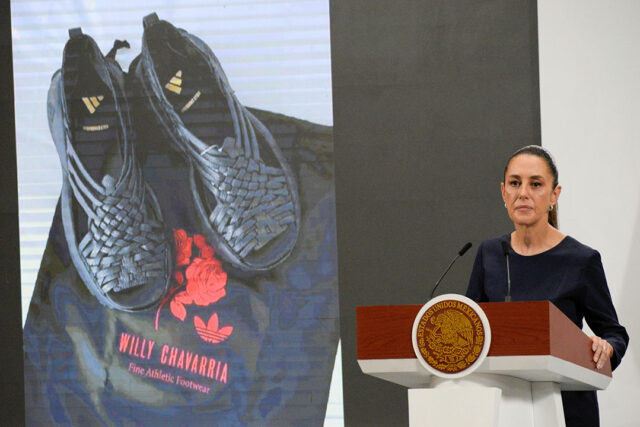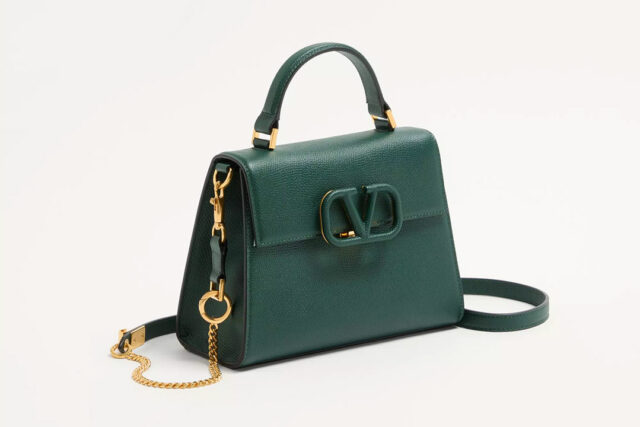At the 8th General Membership Meeting (2025) of the Financial Executives of the Philippines (FINEX), the discussion topic over lunch was “Integrity: Inspiring Progress and Growth.”
Francis Ed. Lim, the Chairman of the Securities and Exchange Commission (SEC) and former FINEX President (2021), opened the talks with a dire warning, “Our integrity as a nation is being tested… we must be catalysts for change.”
“Integrity is the invisible currency of our markets. It underwrites every transaction, every investment, and every decision. When we uphold it, resources flow to their best uses and investors come in,” Mr. Lim said. He added that financial executives can uphold governance standards in every transaction, ensure integrity of companies’ financial statements, and champion investor protection.
He challenged FINEX directly, saying that “as finance leaders of boardrooms, banks, investment houses, and more, (they) can help grow the capital market in the Philippines — which should also be anchored on ethics.”
Integrity Initiative Chairman Alexander Cabrera, who is the Chairman Emeritus of PWC-Isla Lipana and Co., added that finance officers and the public in general must continue to check on government projects. He said one cannot just be silent — even those in the business community. “Calling out government,” he said, “is everyone’s role.”
“The government may suffer from deliberate deafness, call them out anyway and once in a while, let’s sue them because there’s only one way to make the shameless ones react — by a lawsuit,” Mr. Cabrera urged.
Then spoke the fiery Heidi Mendoza, former Commission on Audit (CoA) Commissioner who was appointed undersecretary general for the internal oversight services of the United Nations (UN) in 2015. Now retired, she has focused on her advocacies for integrity.
Ms. Mendoza recounted her public service career of more than two decades, where she was involved in controversies for pointing out anomalies in government — receiving death threats and being tagged in corruption allegations as she testified in court hearings that jailed some corrupt officials.
“Napakalalim, napakalawak ng usapan sa kinukurakot na flood control projects (The discussion on the corrupt flood control projects is very deep, very broad),” she said, bewailing current issues of graft and corruption in flood control projects that have deprived the people of adequate protection and survival during the recent typhoons and monsoon rains. She hopes finance officers and CEOs and COOs can lend their voice to strongly push for accountability and transparency in government processes, including in bidding and procurement. She urged business executives to champion integrity, not just within their company, but the whole country as well.
The same urgency for all concerned citizens to act, and be involved in reforms towards good governance and integrity, was called for by Dr. Jesus P. Estanislao, Founder and Chairman of the Center for Excellence in Government, co-founder of the University of Asia and the Pacific (UA&P), and a former economic planning and finance secretary under the Corazon Aquino presidency after the 1986 EDSA People Power Revolution.
“We may have gotten used to the oft-repeated phrase, ‘progress and growth’ that we miss what they substantially call for — transformation. This is what we need to work for, our national transformation, since the endemic problems of corruption, poverty, and lack of civic-mindedness — that have been weighing us down — cannot be resolved by progress and growth alone. Indeed, they call for no less than a radical transformation of our nation,” Dr. Estanislao said.
“Transformation to a ‘Dream PH’ can only be pursued and achieved through a concerted process that starts with the four core values that our very laws mandate: maka-Diyos, maka-Tao, maka-Kalikasan, maka-Bansa (for God, for People, for Nature and for Country). That is what integrity means: cohesion — full consistency — between the values we profess and the actions we do and the decisions we make as we go through all our ordinary, day-to-day duties,” Dr. Estanislao stressed.
“Our core values do not allow us to be lazy, inactive, passive on-lookers and fence-sitters, waiting for largesse to fall from Congress pork barrels and budgetary insertions. No to ayuda (assistance)!” He cried out. “We must have a fixed time frame and a strategy map to execute, working in common-hearted teams bound in internal value chains working cohesively with other teams, such that the external value chains enable a common-good-oriented external solidarity network.” Dr. Estanislao was visibly impassioned.
Perhaps the passion roused upon the audience by the speakers was doused by the perfunctory call for questions from the floor. The first question asked was a reality-check, “We talk of integrity as an abstraction. But what about the reality of corruption — antithetical to integrity; and do we notice fearfully enough, the creeping culture of impunity that suffocates justice and blows away hopes for that ‘Dream PH’ that Dr. Estanislao envisions? What are we to do about the pervading corruption and condoned impunity in our country today?”
“I am sorry, but we have run out of time — that question is complex and will need much discussion with the panel of speakers — that deserves another lunch-meeting,” the moderator intervened.
Alas, all that philosophical talk about abstract integrity, and no time to recognize and analyze the actual physical/material corruption devouring society with impunity. Does it suggest no time, nor enough interest, to prioritize careful strategizing for that “Dream PH” that Dr. Estanislao so positively envisioned?
It is scary that at this time, issues and cases against integrity and good governance abound. Exposés on graft and corruption end with villains eventually going scot-free of both punishment and public censure.
The Philippine Daily Inquirer issue of Aug. 21 headlined Sen. Panfilo Lacson saying, “only about 40% of funding for flood control projects (P351 billion) are actually utilized… 20% to 25% usually goes to the funder or project proponent who is a politician.”
The Freeman of Sept. 30, 2024 reported that the World Bank, ADB, and IMF estimated that corruption in the Philippines diverts 20% of the budget to politicians’ pockets. The enacted Philippine national budget for FY 2025 is P6.326 trillion, while the proposed National Budget for FY 2026 is P6.793 trillion.
On Feb. 5 this year, 215 members of the House of Representatives signed an impeachment complaint against Vice-President Sara Duterte on charges that include corruption, plotting to assassinate President Ferdinand Marcos, Jr., involvement in extrajudicial killings, and incitement to insurrection and public disorder. The impeachment has been dribbled and delayed by technicalities of the law bartered between competing branches of government processing the case.
Former president Rodrigo R. Duterte is awaiting trial in the International Criminal Court for the extrajudicial killings of at least 8,663 people in his “drug war.” (The Philippine Commission on Human Rights state that the real number of “drug war” killings is possibly triple the number included in the UN report — hrw.org, Feb. 13, 2023).
The glamorization of unexplained wealth and dynastic power by sensationalist media engulfs a half-interested society that must go about its business and other individualistic priorities. Where have our core values of “maka-Diyos, maka-Tao, maka-Kalikasan, maka-Bansa” gone?
The United Nations Office on Drugs and Crime (unodc.org) posits four major theories used to explain why corruption occurs:
1. Principal-agent theory. The desire for personal gain is often understood as the primary cause of public sector corruption. Public officials (agents) serve to protect the interests of the public (the principal); however, in reality, the interests of the agents often diverge from the interests of the principal, and while the former can prescribe the pay-off rules in the principal-agent relationship, there is informational asymmetry to the advantage of the agent, which could be used by him or her for personal benefit (Groenendijk, [1997]).
2. Collective action theory. Systemic corruption is a collective problem, because people rationalize their own behavior based on the perceptions of what others will do in the same situation. When corruption becomes a social norm, everyone starts seeing it simply as the way to get things done (Persson, Rothstein and Teorell [2013]).
3. Institutional theory. This stresses that while corruption can occur on an individual level, it can also be institutional in nature in cases where institutions are structured in a way that makes them deviate from their original purpose.
A paradigmatic example is private financing of political campaigns in the United States. “[t]he institutionalized practice of receiving private funds for electoral campaigns makes the institution of democratic elections depend on… the arbitrary influence of financial powers” (Ceva and Ferretti [ 2017]).
4. Game theory. This theory borrows from risk analysis in economic literature. For example, in the area of public procurement, where participants in corruption include private sector actors that are unsure of the actions of others. The fear of being outdone by competitors acting illegally or unethically thus motivates otherwise ethical companies to engage in procurement corruption.
The European Consortium for Political Research (ECPR) says that “Corruption is one of the most important obstacles to economic development and accountability, as it undermines effective governance and erodes trust in institutions. Combating corruption requires a combination of approaches, including intrinsic ethical elements within the public sector, external controls like laws and regulations, and broad public participation,” the ECPR suggests.
And we go back to Dr. Jess Estanislao’s call at the FINEX conference on Integrity: “We need to work for our national transformation — let’s work that transformation from the roots — starting with good governance and stressing ethics as ground rules from the smallest units in society — the family; from the smallest businesses and up the organizations of big business.”
And most especially, integrity, transparency and accountability must be firmly upheld and sacredly observed in public service. The Law must punish the Corrupt.
We cannot just be talking Integrity and living with Corruption.
Amelia H. C. Ylagan is a doctor of Business Administration from the University of the Philippines.
ahcylagan@yahoo.com

















